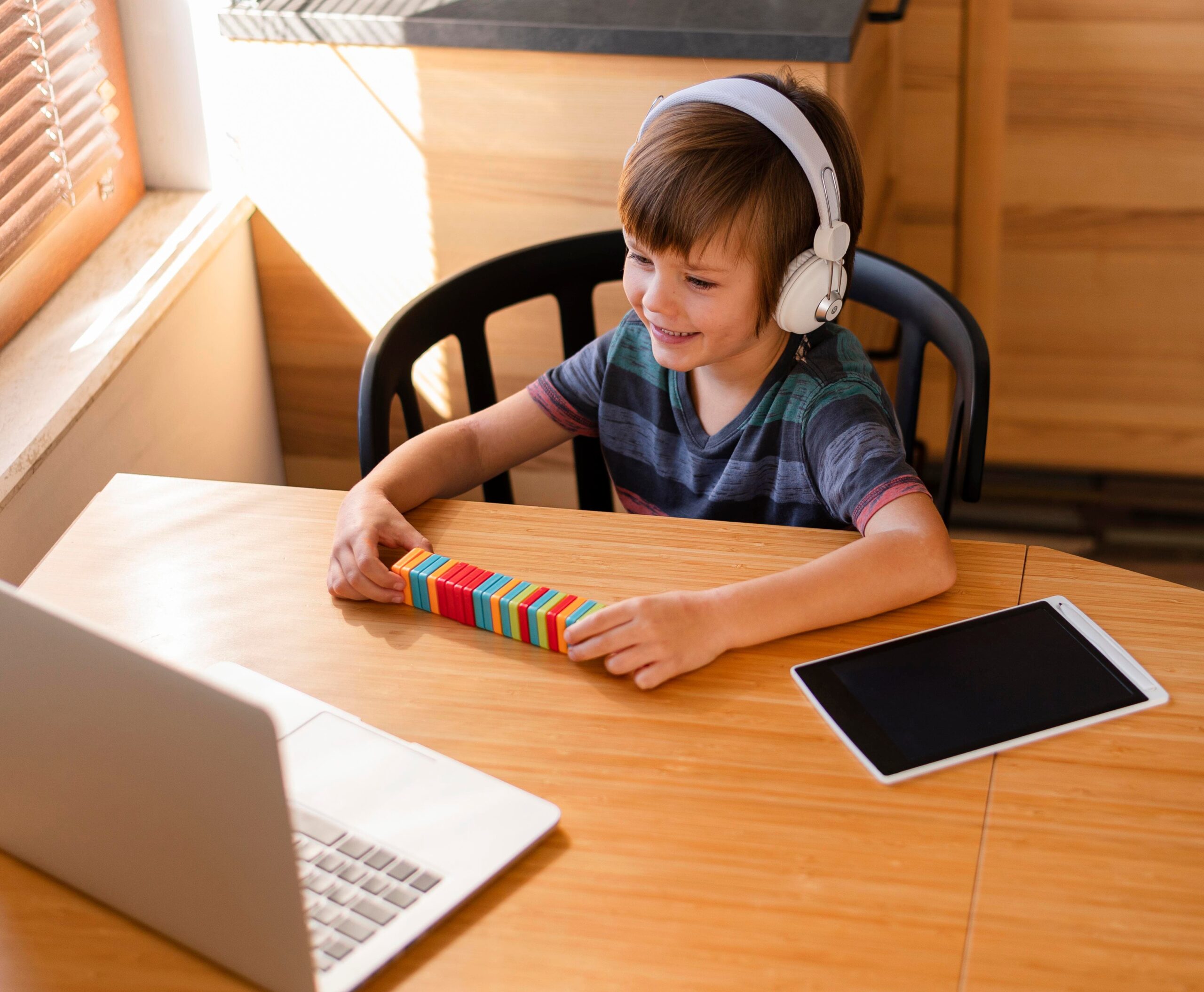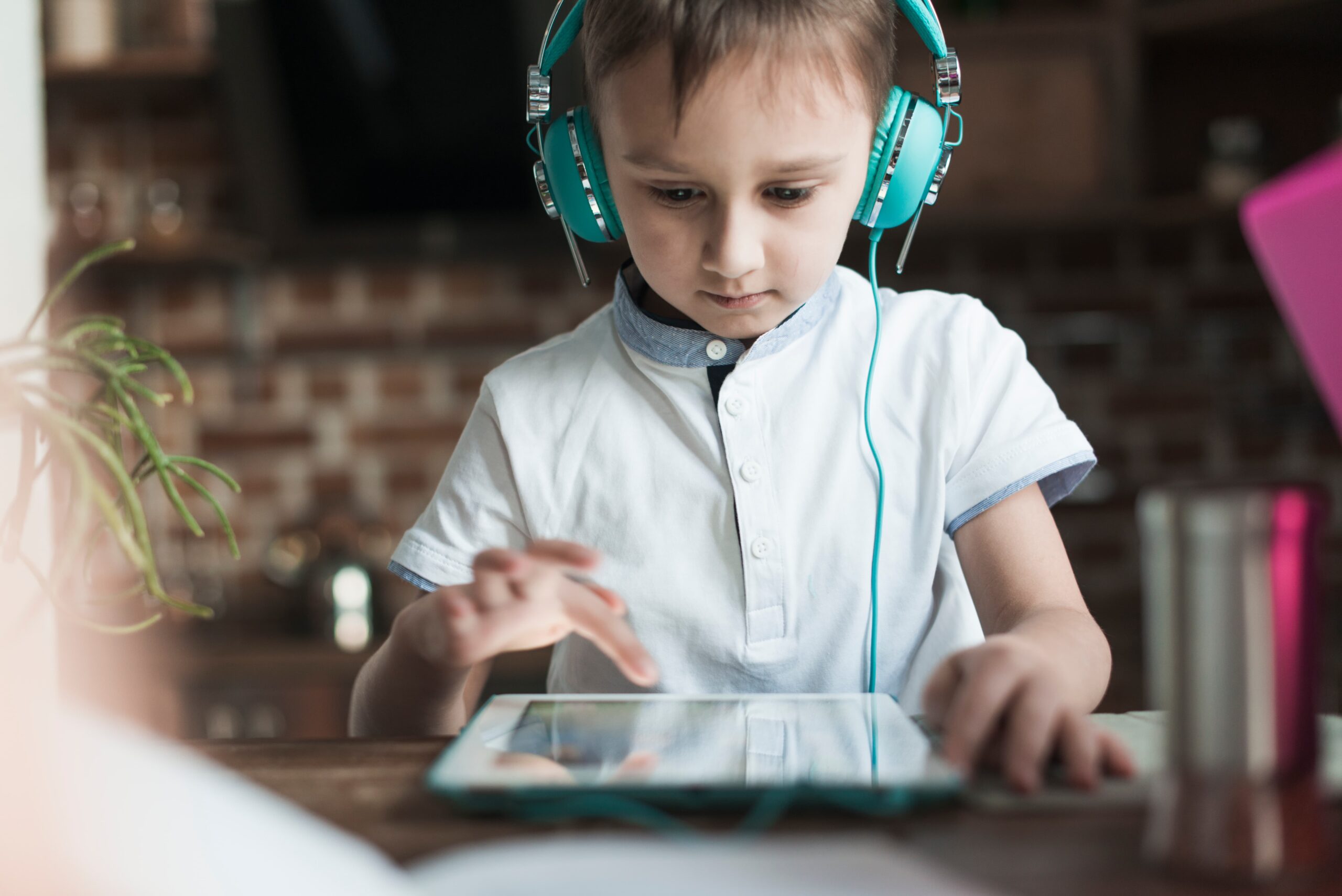Key Points:
- Technology can enhance focus and engagement during virtual ABA therapy when used strategically.
- Tools like visual timers, interactive platforms, and screen management software help reduce distractions and support learning.
- Parents and therapists can combine behavioral principles with digital aids to create more effective and engaging virtual ABA sessions.
For many parents, keeping a child focused during virtual ABA therapy can feel like a constant challenge. Distractions at home, screen fatigue, and difficulty sustaining attention often make it hard for children with autism to stay engaged.
Yet, technology, when used purposefully, can transform the online learning experience. By integrating tech tools designed for focus and motivation, virtual ABA sessions can become more interactive, structured, and effective.
From visual aids to behavior-tracking apps, today’s technological ABA solutions offer meaningful support for both therapists and families. These tools help create consistency, reduce frustration, and make online sessions more productive.
The Growing Role of Technological Tools in ABA
Applied Behavior Analysis (ABA) has always relied on structure, data, and reinforcement. In virtual settings, technology extends these same principles into digital spaces, making therapy more accessible and adaptable.
Modern applied behavior technologies allow therapists to replicate in-person teaching techniques, such as prompting, reinforcement, and feedback, through interactive platforms. Digital ABA tools can improve engagement and learning outcomes for children with autism when implemented correctly.
The key is choosing technology for autism that aligns with each child’s learning style. Some children respond best to visual cues and gamified platforms, while others benefit from simple, distraction-free tools that promote structure and predictability.
Digital Platforms That Support Focus and Learning
Many ABA providers now use specialized online platforms that mimic the structure of in-person sessions. These platforms combine video conferencing with built-in teaching and data collection features.
Some popular tools used in virtual ABA sessions include:
- CentralReach or Catalyst: These platforms allow therapists to track data in real time, adjust teaching strategies, and monitor progress without interrupting the session.
- Boom Learning or Kahoot!: Interactive games and quizzes reinforce target behaviors and keep children engaged through visual rewards.
- Google Slides or PowerPoint visual boards: These create digital versions of token boards or visual schedules, offering predictability and motivation.
These tools embody the applied behavior technologies that help translate ABA methods into engaging, tech-supported experiences.
Using Visual Aids to Maintain Structure
Children with autism often benefit from structured visual supports. During virtual ABA therapy, digital visuals act as consistent cues that help maintain focus and reduce anxiety.
Therapists and parents can use tools like:
- Visual timers (Time Timer or Countdown Apps): These show the passage of time, helping children anticipate transitions between activities.
- Visual schedules (Choiceworks, Canva templates): These outline session steps, offering predictability and a sense of control.
- Emotion charts or digital token boards: These motivate children by making rewards tangible and progress visible.
Visual structure supports attention and helps children process expectations more clearly, minimizing frustration during online sessions.

Reinforcement Systems Through ABA Technology
Reinforcement is at the heart of ABA therapy, and digital tools make it easy to deliver rewards instantly, even during virtual sessions.
Therapists use online token boards, point systems, or digital sticker charts to acknowledge positive behavior in real time. Many tools can connect to simple reinforcers, such as unlocking a fun activity after completing a task.
Platforms like ClassDojo or custom Google Sheets tracking systems can be integrated into virtual ABA sessions. They make it easy for both therapist and child to visualize progress, celebrate achievements, and stay motivated throughout the session.
This approach supports one of the main goals of ABA technology: ensuring that feedback and rewards remain immediate, consistent, and meaningful.
Tools for Reducing Screen Distractions
One of the biggest challenges in virtual ABA therapy is the constant temptation of digital distractions. Background notifications, open tabs, or unrelated websites can quickly derail focus.
To create a controlled learning environment, therapists and parents can use:
- Screen management apps (Cold Turkey, Freedom, or FocusMe): These block access to other websites or apps during therapy sessions.
- Parental control tools (Qustodio, Net Nanny): These maintain safe and focused device use during structured learning.
- Full-screen mode and do-not-disturb settings: Simple adjustments that limit visual clutter and interruptions.
These tools ensure that the digital environment supports rather than competes with learning, making ABA sessions smoother and more productive.
Integrating Gamified Learning for Motivation
Gamification can be an effective way to maintain engagement and motivation during virtual ABA sessions. For children with autism, games can provide immediate feedback, structure, and visual reinforcement.
Programs like Prodigy or TeachTown use gamified ABA-based activities to teach social, cognitive, and academic skills. When combined with behavioral strategies, these platforms make repetitive learning tasks feel fun and rewarding.
However, it’s important to use gamification thoughtfully. The goal is not to overwhelm the child with screen-based rewards but to incorporate structured play that supports focus and learning goals.
Applied Behavior Technologies for Data and Progress Tracking
Data collection and analysis are fundamental to ABA therapy. In virtual settings, technology streamlines this process, allowing therapists to monitor and adjust treatment plans efficiently.
Tools such as DataFinch Catalyst, Motivity, or ABA Matrix record session notes, graph progress, and automate data summaries. This allows therapists to spend more time engaging with the child rather than manually tracking each behavior.
By using technology in ABA for data analysis, therapists can make evidence-based decisions and quickly identify areas needing adjustment. Parents also benefit from seeing their child’s progress visually represented, creating transparency and collaboration.
Supporting Attention Through Sensory-Friendly Tech Tools
Sensory regulation plays a key role in maintaining attention. Many children with autism become overstimulated or distracted during virtual therapy, leading to decreased engagement.
To address this, therapists often recommend sensory-friendly autistic learning tools such as:
- Noise-canceling headphones: Reduce environmental distractions and improve focus.
- Blue light filters or screen dimmers: Prevent visual fatigue and overstimulation during long sessions.
- Fidget apps or small sensory breaks: Offer movement or tactile input between activities to reset attention.
When used strategically, these aids help children regulate their sensory input, making it easier to participate and concentrate throughout virtual sessions.
Encouraging Parental Involvement with Digital Tools
Parents play a critical role in virtual ABA therapy. Technology can empower them to actively support their child’s sessions.
Many ABA technology platforms offer parent dashboards where caregivers can view progress, track session data, and learn how to reinforce skills at home. Video recording features also allow parents to review sessions and apply techniques consistently.
This shared access builds collaboration between therapists and families, ensuring continuity of care and better generalization of skills.

Practical Tips for Making Tech Work in Virtual ABA Sessions
When introducing technology into virtual ABA sessions, balance and structure are key. Here are some strategies to make tech tools more effective:
- Start with a short list of tools and gradually expand as the child adapts.
- Keep the environment free from unnecessary apps or open tabs.
- Use consistent visual cues and reinforcement tools across sessions.
- Involve the child in choosing digital rewards or visuals to boost motivation.
- Review data regularly to assess what tools work best for maintaining focus.
By combining behavioral strategies with well-chosen technology, virtual ABA therapy can remain engaging, efficient, and personalized.
Empowering Focus: The Right Blend of ABA and Technology
The integration of technology into ABA therapy continues to grow, offering new ways to enhance focus, engagement, and learning. When used thoughtfully, autism tech tools bridge the gap between therapist and learner, providing structure and motivation that extend beyond the screen.
These applied behavior technologies do not replace human interaction but instead strengthen it. They help children learn in environments that feel familiar, safe, and interactive. For families navigating virtual ABA therapy, technology can be the key to unlocking consistent progress and confidence in their child’s learning journey.
Empower your child’s learning experience through personalized ABA therapy in Virginia and New York with Empower ABA. Our dedicated team uses evidence-based methods and innovative technology to enhance focus, motivation, and progress during each session.
Empower ABA’s therapists tailor every virtual session to meet your child’s individual needs, integrating tools that promote attention, communication, and independence. With the right support and technology, your child can thrive both online and in daily life.
Start your child’s journey toward meaningful growth today. Contact us to learn more about our ABA therapy services in Virginia and New York.

